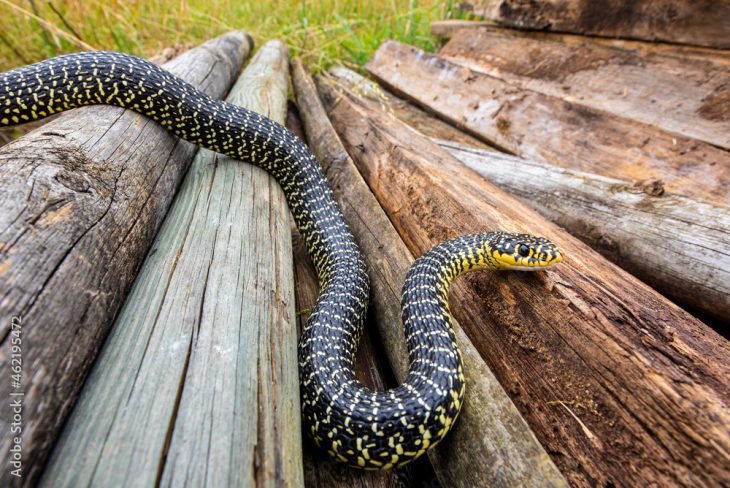
Do you have any idea what kind of reptiles lurk in the dense and mysterious rainforests? These lush habitats are teeming with fascinating and terrifying creatures, and snakes as well as other reptiles are definitely one of them. Imagine walking through the thick foliage and spotting a colorful gecko or a camouflaged iguana blending seamlessly with its surroundings. Rainforests, with their humid climate and abundant vegetation, provide the perfect environment for a diverse array of reptiles. Whether you’re a budding herpetologist or just curious about these scaly inhabitants, this list of 25 reptiles will take you on an exciting journey through one of nature’s most intriguing ecosystems.
1
of 25
Flying Snake
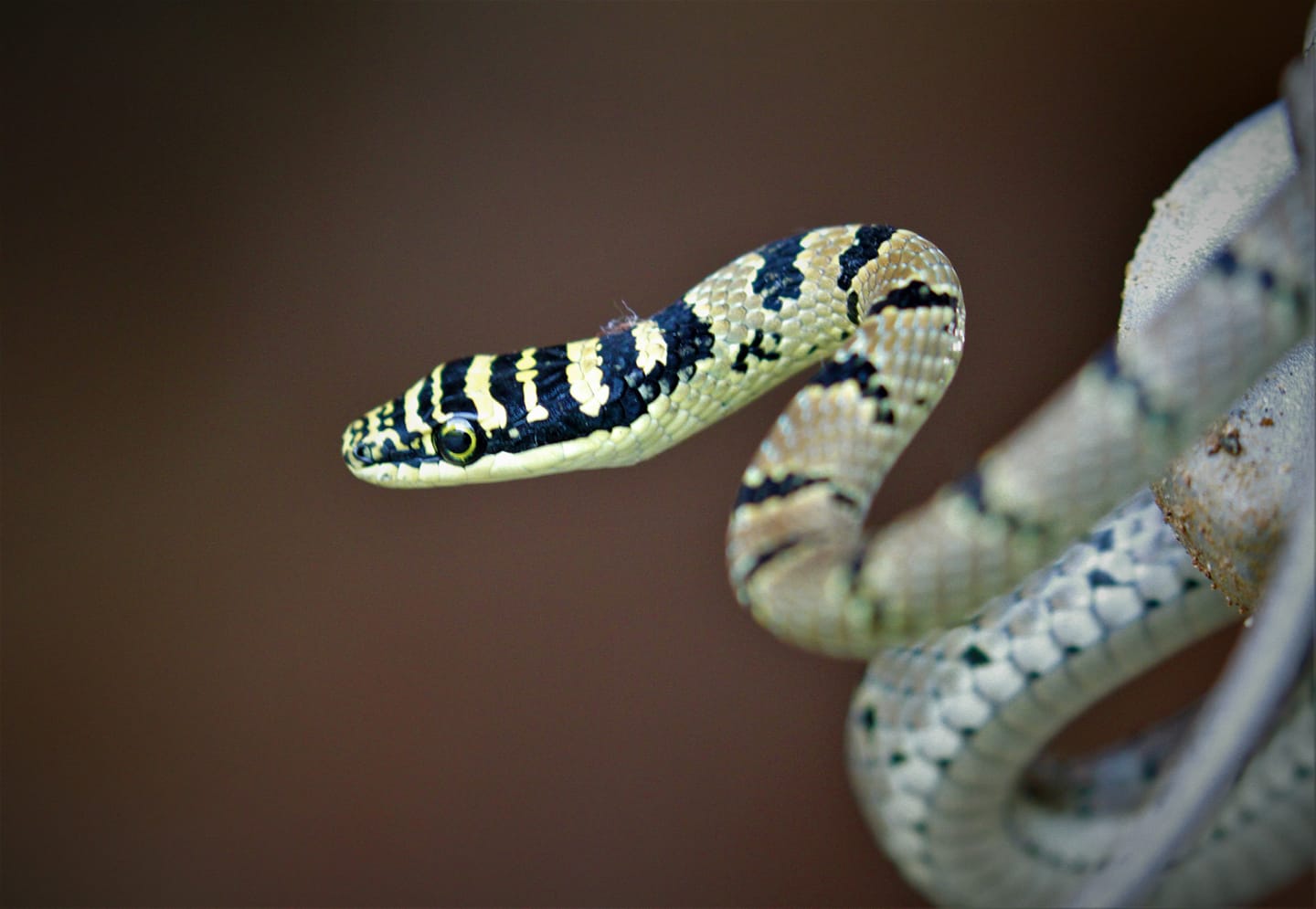
The Flying Snake, a unique rainforest inhabitant, defies gravity with its gliding ability. Despite its lack of wings, this serpent, native to the Sri Lankan wild, can soar through the air, using its flattened body to ride the wind and make its way through the dense forest canopy while searching for food.
Read More About Flying Snake: 17 Enigmatic Facts About Sri Lankan Flying Snake
2
of 25
False Water Cobra
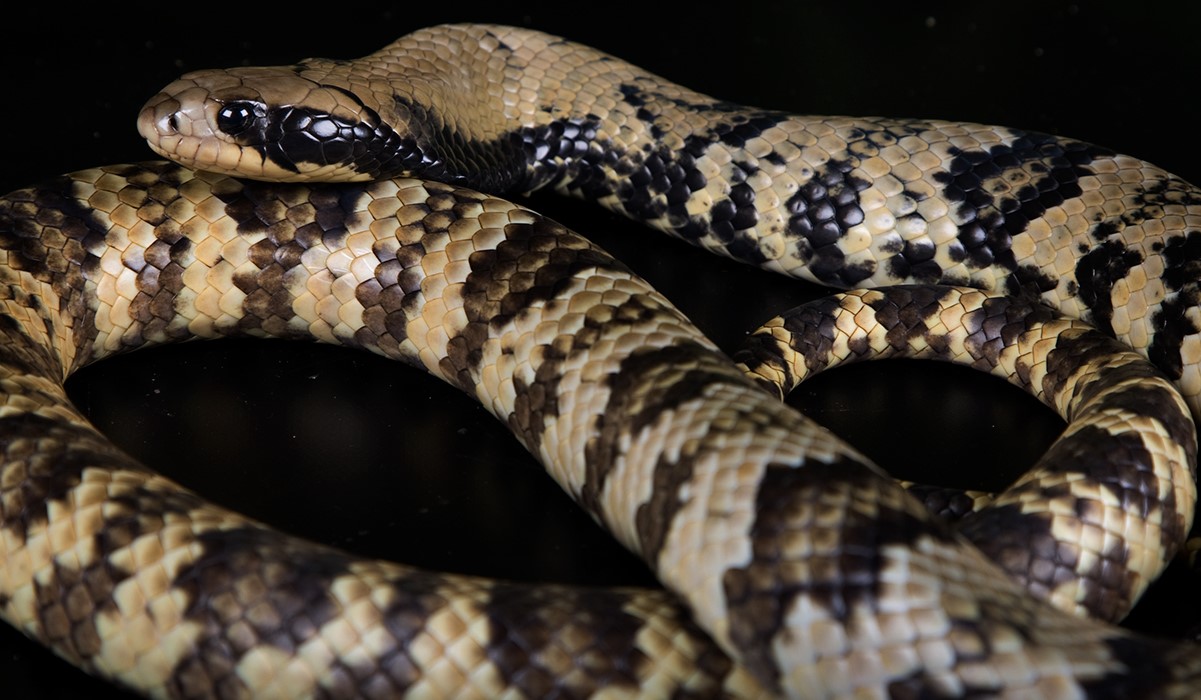
The False Water Cobra, a non-venomous snake, lurks among the dense foliage of the rainforest. Recognizable by its elongated body and distinct markings, this reptile is a master of disguise. Yet, despite the name, it does not actually belong to the cobra family. However, it does mimic the behavior pf a typical cobra mainly to deter predators.
Read More About False Water Cobra: 18 Astounding Facts About False Water Cobra
3
of 25
Frilled Lizard
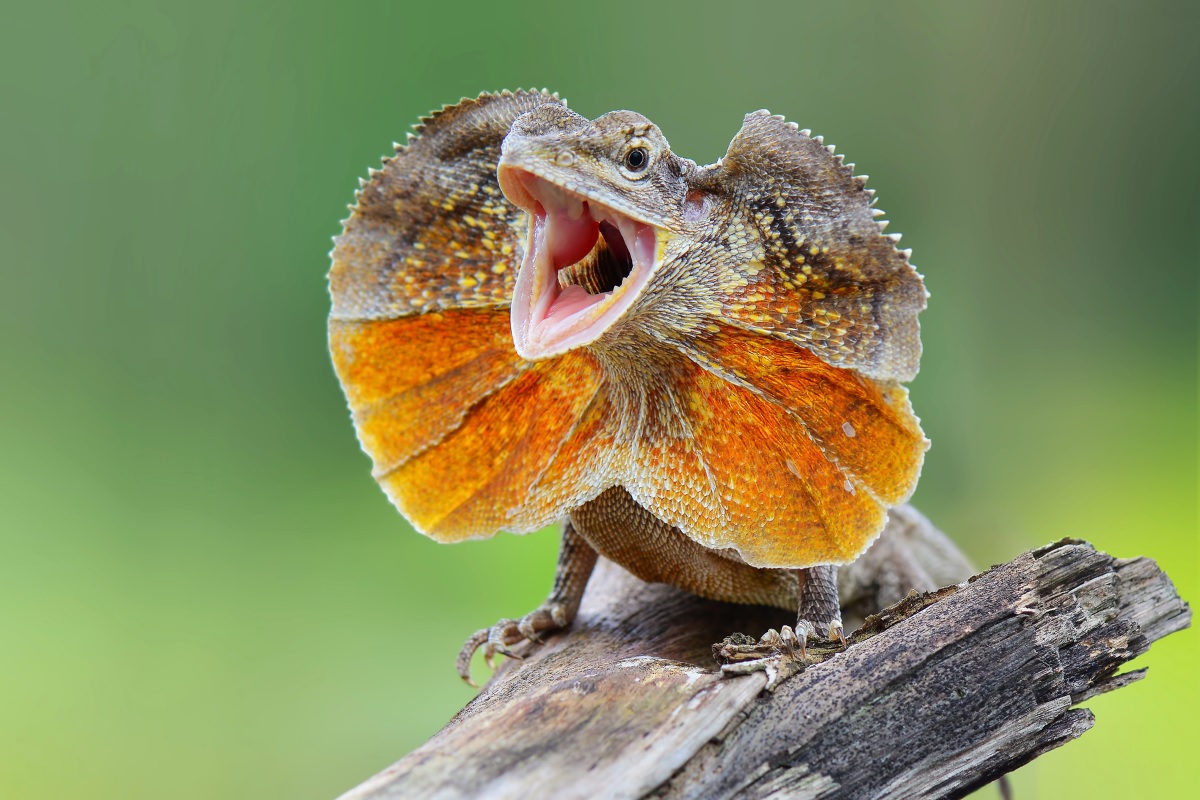
The frilled lizard, known for its distinctive frill around its neck, is a fascinating reptile. When threatened, it extends its frill to appear larger and more intimidating to predators. This lizard is an adept climber and spends much of its time in trees. It has an intriguing behavior, and has learned to adapt to the harsh conditions of its rainforest home.
Read More About Frilled Lizard: 26 Best Frilled Lizard Facts
4
of 25
Hawksbill Turtle

The Hawksbill Turtle, an endangered species, roams the rainforest with distinctive features like its hooked beak and colorful shell. Its presence is crucial to maintaining the ecosystem’s balance, as it feeds on sponges, thereby controlling their population. Discover more things about this remarkable reptile, including current conservation efforts to preserve its dwindling population.
Read More About Hawksbill Turtle: 12 Facts About Hawksbill Turtle
5
of 25
Red Tailed Boa Constrictor

The Red-Tailed Boa Constrictor is a fascinating inhabitant of rainforests, renowned for its stunning color and powerful constriction abilities. Found primarily in Central and South America, these snakes play a vital role in maintaining ecological balance. With its distinctive reddish-brown tail, this species is a sight to behold in its natural habitat, but caution is recommended so untoward incidents can be avoided.
Read More About Red Tailed Boa Constrictor: 19 Red Tailed Boa Constrictor Facts
6
of 25
Monitor Lizard

Monitor lizards are large and powerful. They are known for their keen intelligence, strong limbs, and sharp claws, making them formidable hunters. Their diet includes insects, eggs, and small mammals, and this contributes largely to their role as essential predators in the ecosystem. Some species, like the Komodo dragon, can grow exceptionally big, which can make them appear menacing.
Read More About Monitor Lizard: 19 Great Monitor Lizard Facts
7
of 25
King Cobra

The king cobra, the world’s longest venomous snake, can grow up to 18 feet and is known for its potent neurotoxic venom. Found in the rainforests of Southeast Asia, this apex predator primarily preys on other snakes. Its distinctive hood and intimidating hiss make its presence formidable wherever it shows up.
Read More About King Cobra: 17 Enigmatic Facts About King Cobra
8
of 25
Golden Gecko

The golden gecko, known for its striking yellow color, is a fascinating reptile native to the rainforests of Vietnam. This nocturnal creature thrives in humid environments and is adept at climbing trees and walls by using its adhesive toe pads. Its diet mainly consists of insects, making the gecko an efficient pest controller. Curious about this vibrant reptile? Dare to get a closer look.
Read More About Golden Gecko: 20 Golden Gecko Facts
9
of 25
Chameleon
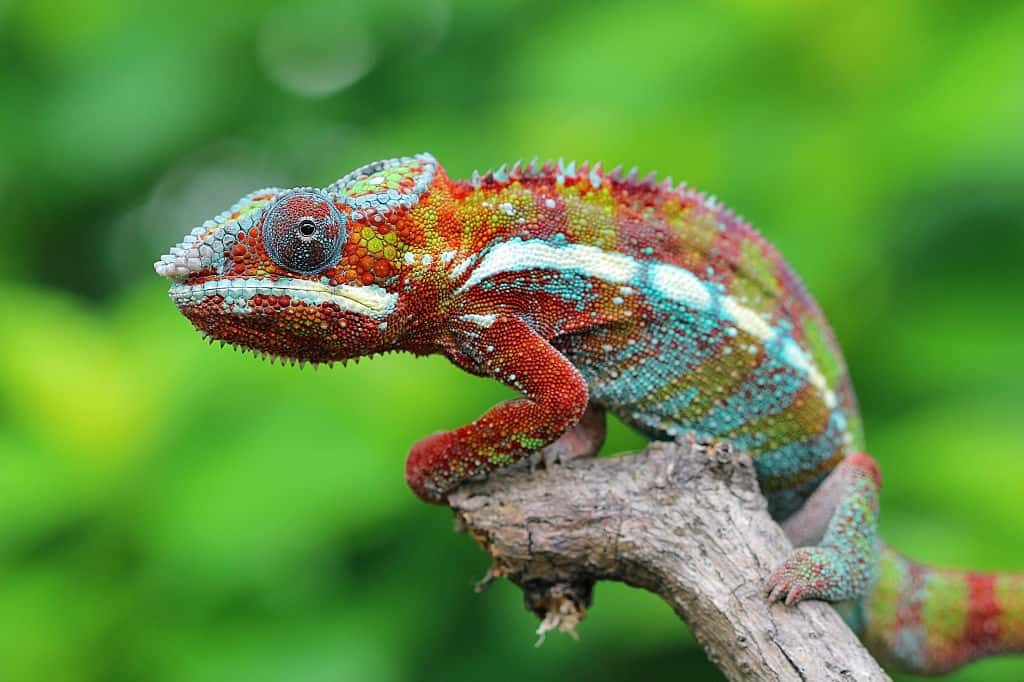
The chameleon is a beguiling rainforest reptile known for its remarkable ability to change colors,. This aid them greatly in their camouflage efforts and in regulating body temperature. With its unique, independently mobile eyes, the typical chameleon can look in two different directions simultaneously, enhancing its hunting skills. Its zygodactylous feet and prehensile tail provide them with exceptional grip when holding on to branches.
Read More About Chameleon: Chameleon Facts
10
of 25
Black Caiman
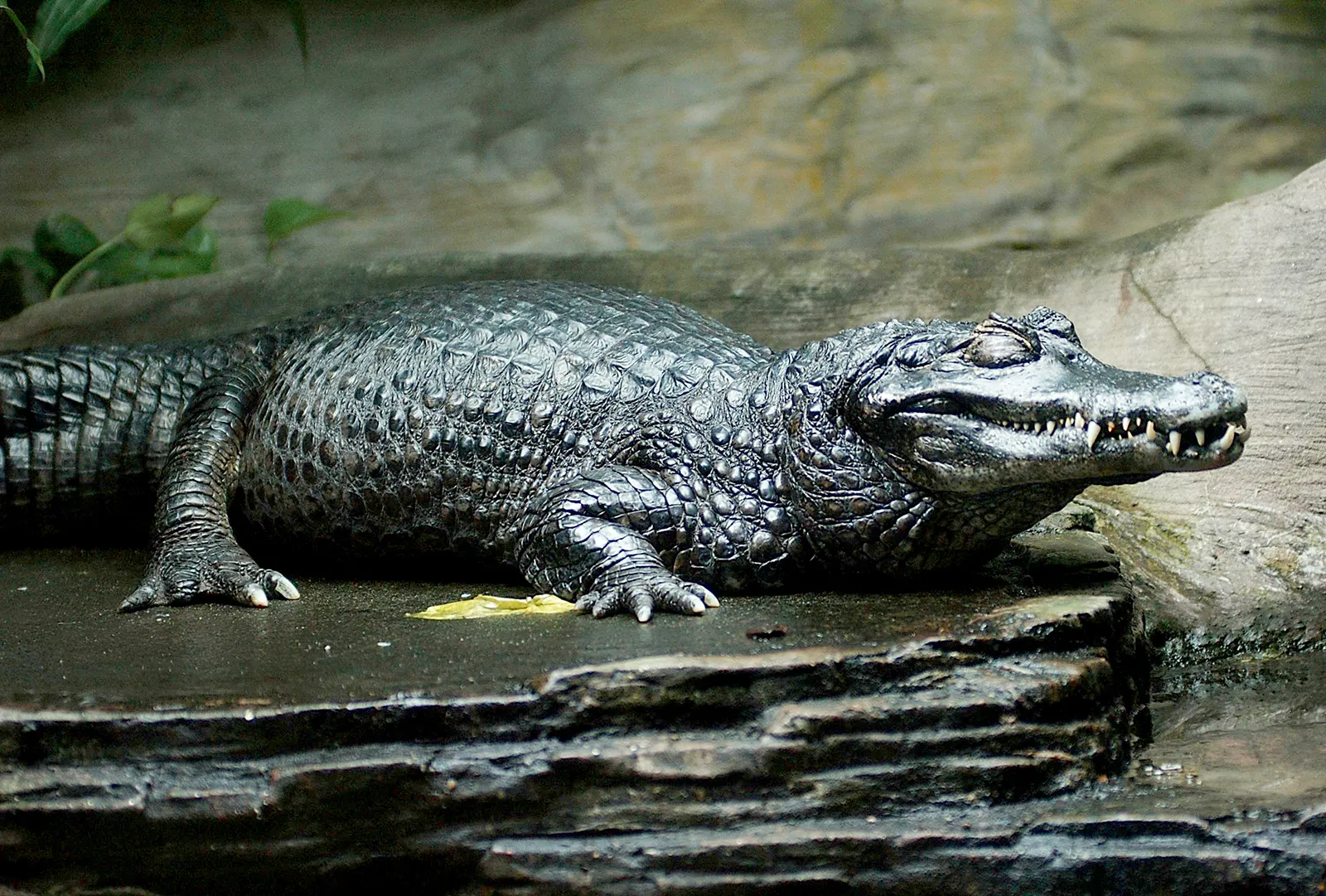
The Black Caiman is one of the largest predators in the Amazon Rainforest, often reaching lengths of over 15 feet. This formidable reptile has a powerful bite and preys on a variety of animals, including fish, birds, and mammals. Its dark, scaly skin helps it blend easily in the murky waters that it inhabits.
Read More About Black Caiman: 12 Facts About Caiman
11
of 25
Reticulated Python
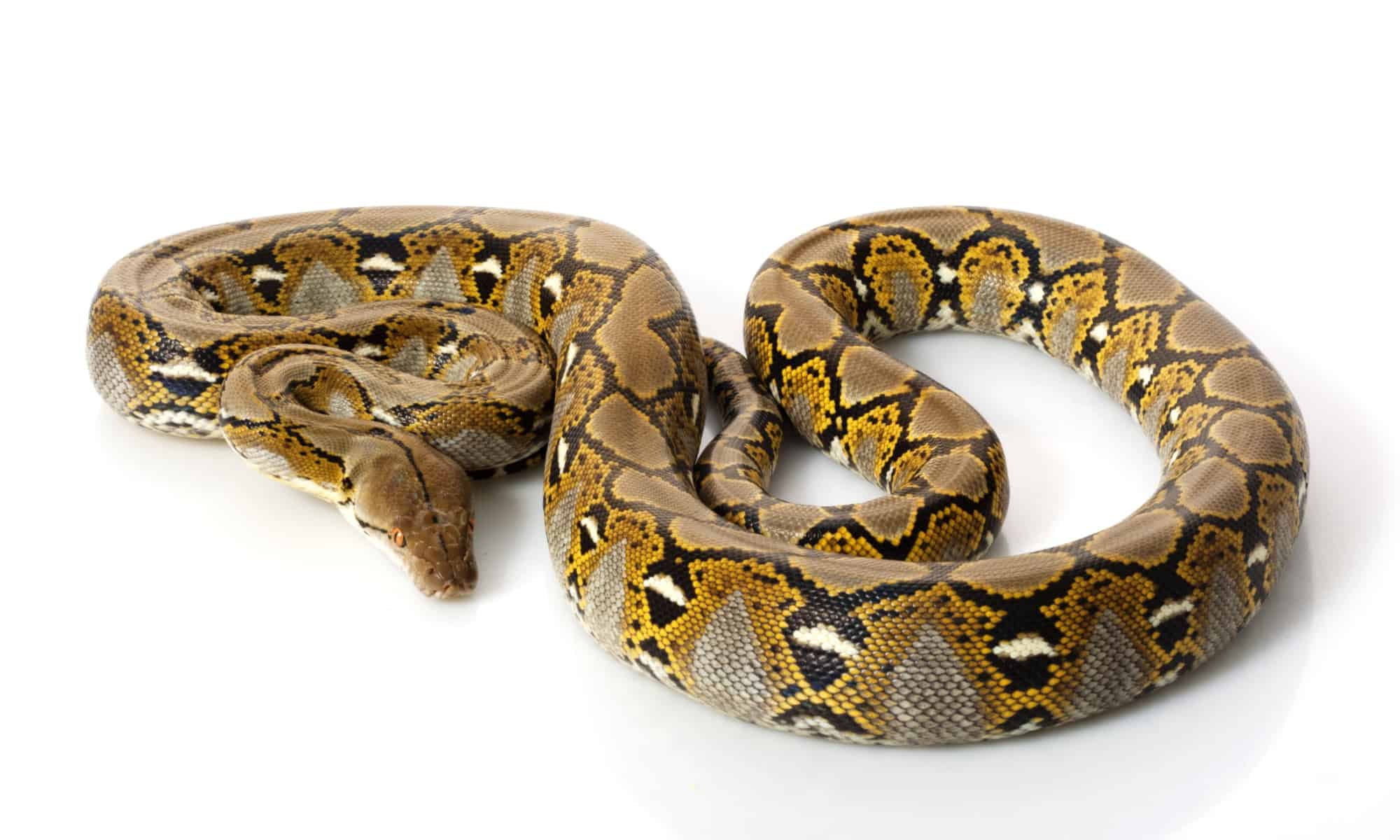
The Reticulated Python, one of the world’s longest snakes, thrives in the rainforests of Southeast Asia. Known for its intricate geometric patterns, it is both a skilled swimmer and an agile climber. This constrictor preys on mammals and birds, playing a crucial role in keeping the ecosystem in equilibrium. Its ability to adapt to various environments is also remarkable.
Read More About Reticulated Python: 11 Fascinating Facts About Reticulated Python
12
of 25
Basilisk

The basilisk, often called the “Jesus Christ lizard,” is famous for its ability to run on water. Found in the rainforests of Central and South America, this reptile uses its long toes and fringe-like scales to swiftly cross water surfaces. With its impressive speed and agility, the basilisk can easily evade its predators. Its food consist mostly of insects, small mammals, and plants.
Read More About Basilisk: 20 Facts About Basilisk
13
of 25
Iguana
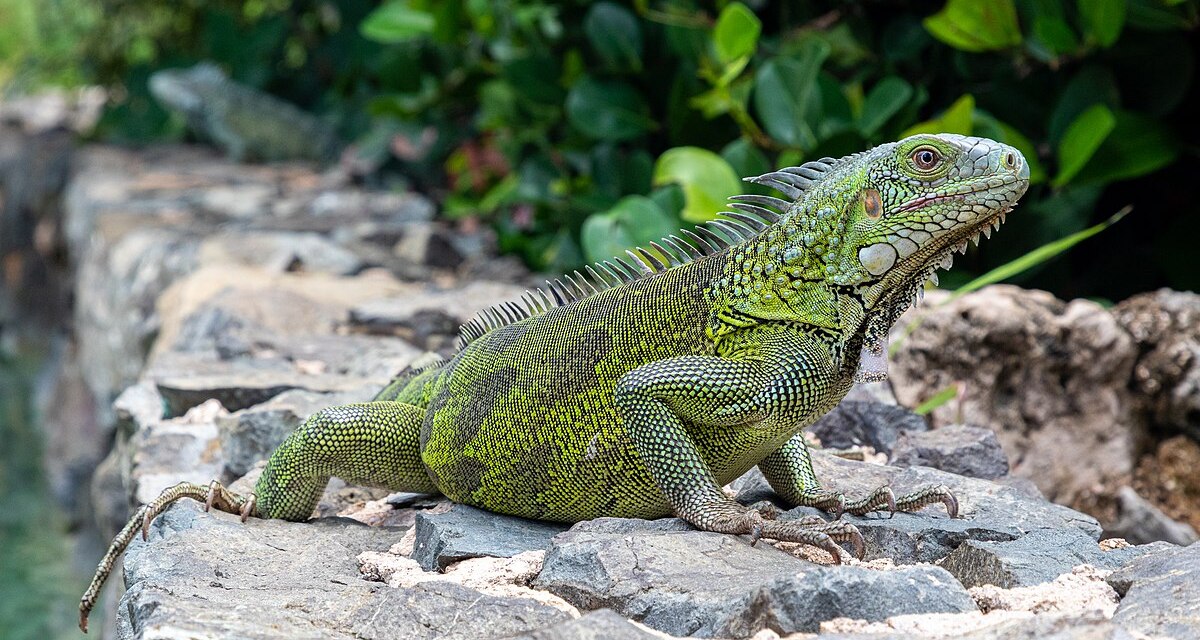
The Iguana, a striking rainforest reptile, boasts of vibrant scales and a distinctive crest along its back. Known for its impressive size and agility, this herbivorous lizard thrives in lush, tropical environments, and can often be seen resting on tree branches. Its unique adapting ability make the iguana a fascinating subject for nature enthusiasts.
Read More About Iguana: Iguana Facts
14
of 25
Green Anaconda
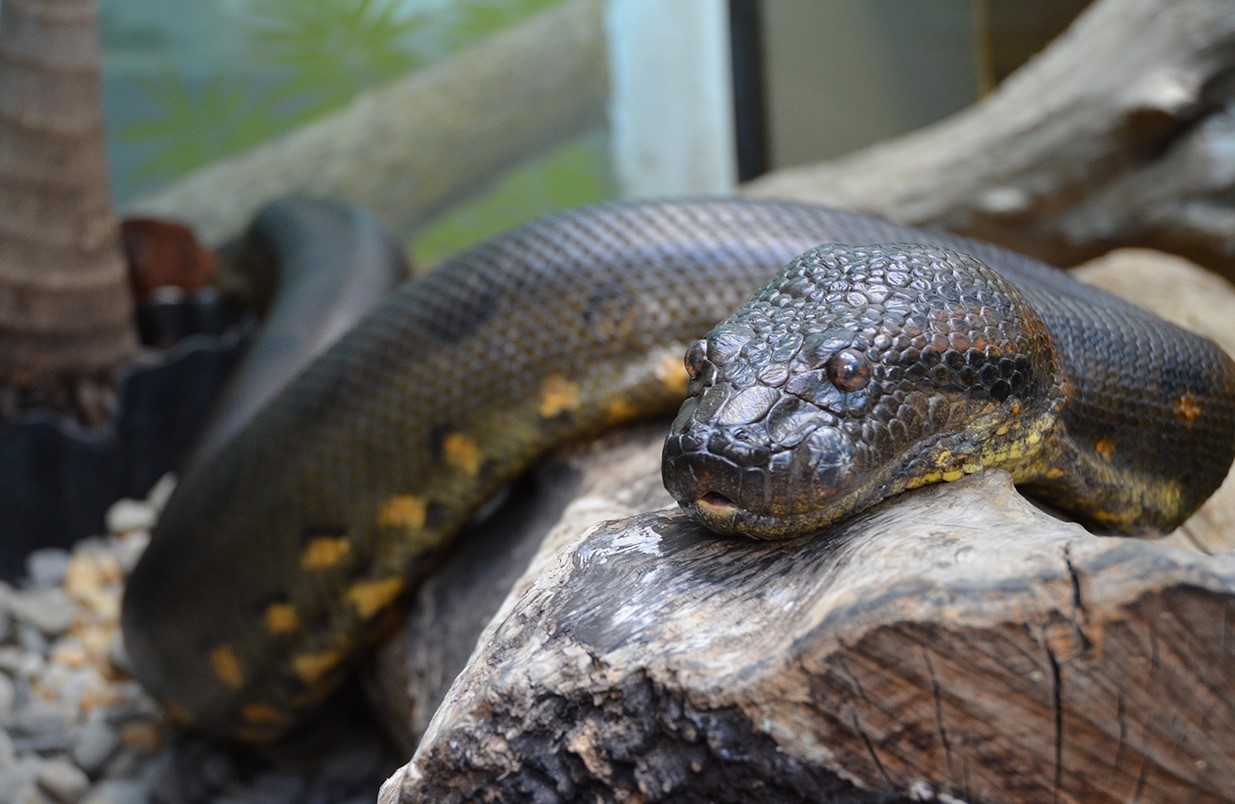
Ever wondered about the giants lurking in the Amazon? The green anaconda, one of the largest snakes on Earth, is among them, and it calls the rainforest home. This snake can grow to over 30 feet long and can weigh to as much as a small car. Despite its size, the green anaconda is a master of stealth, often lying still in murky waters while waiting for its prey. Dive into the dangerous world of the green anaconda, and you’ll see why this creature is highly feared in the rainforest.
Read More About Green Anaconda: 18 Astounding Facts About Green Anaconda
15
of 25
Emerald Tree Boa
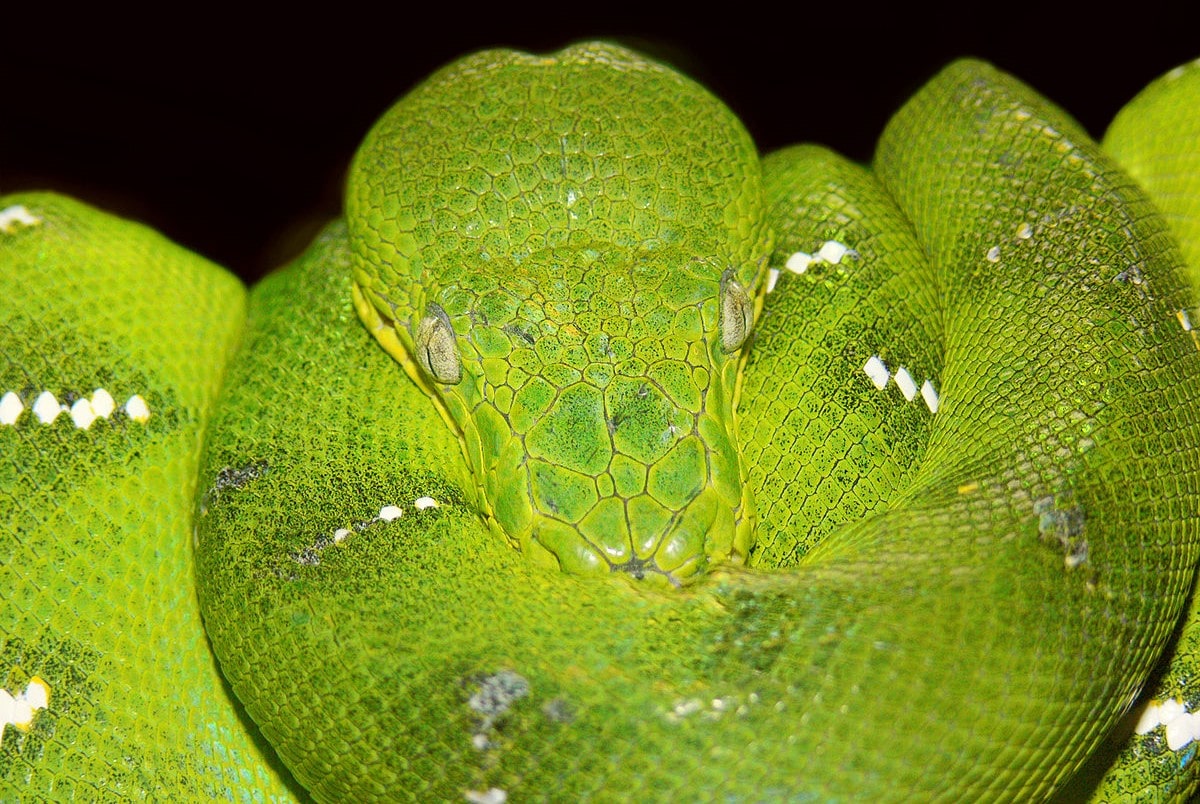
Emerald Tree Boas are colorful snakes commonly found in the Amazon Rainforest. Known for their striking green hue and white zigzag markings, they spend most of their time hanging out in trees. Unlike other snakes, these boas give birth to live young. They also have incredibly long teeth, perfect for catching prey like birds and small mammals. An even cooler fact is that they’re non-venomous and rely on constriction to subdue their potential meal. With their nocturnal habits, the emerald tree boa is more active at night, making them elusive creatures of the rainforest.
Read More About Emerald Tree Boa: 12 Surprising Facts About Emerald Tree Boa
16
of 25
Amazon Tree Boa
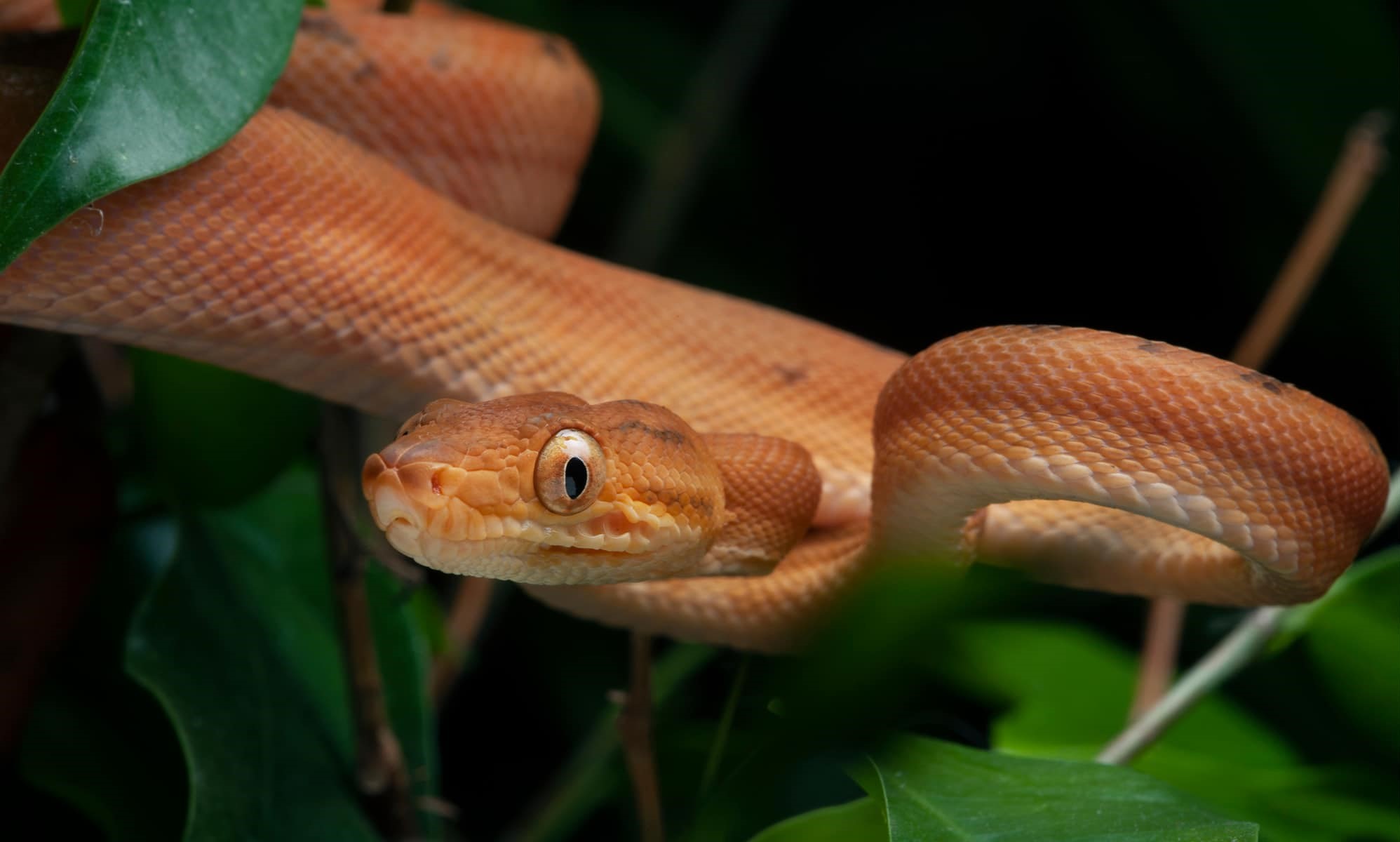
The Amazon Tree Boa, a stunning snake with vibrant colors and slender body, is a true marvel of the rainforest. They may not have pretty faces, but they’re skilled climbers, and can often be found coiled among tree branches where they wait for their next food. Their nocturnal nature adds a layer of mystery to these tree boas, with large eyes helping them navigate through the darkness. They act defensively on instinct, but can be feisty when threatened. When it’s time to change skin color, the range can run from bright orange to dull browns. Whether you’re a snake enthusiast or just curious, this boa type offers surprising insights into the rainforest’s biodiversity.
Read More About Amazon Tree Boa: 9 Enigmatic Facts About Amazon Tree Boa
17
of 25
Red-footed Tortoise
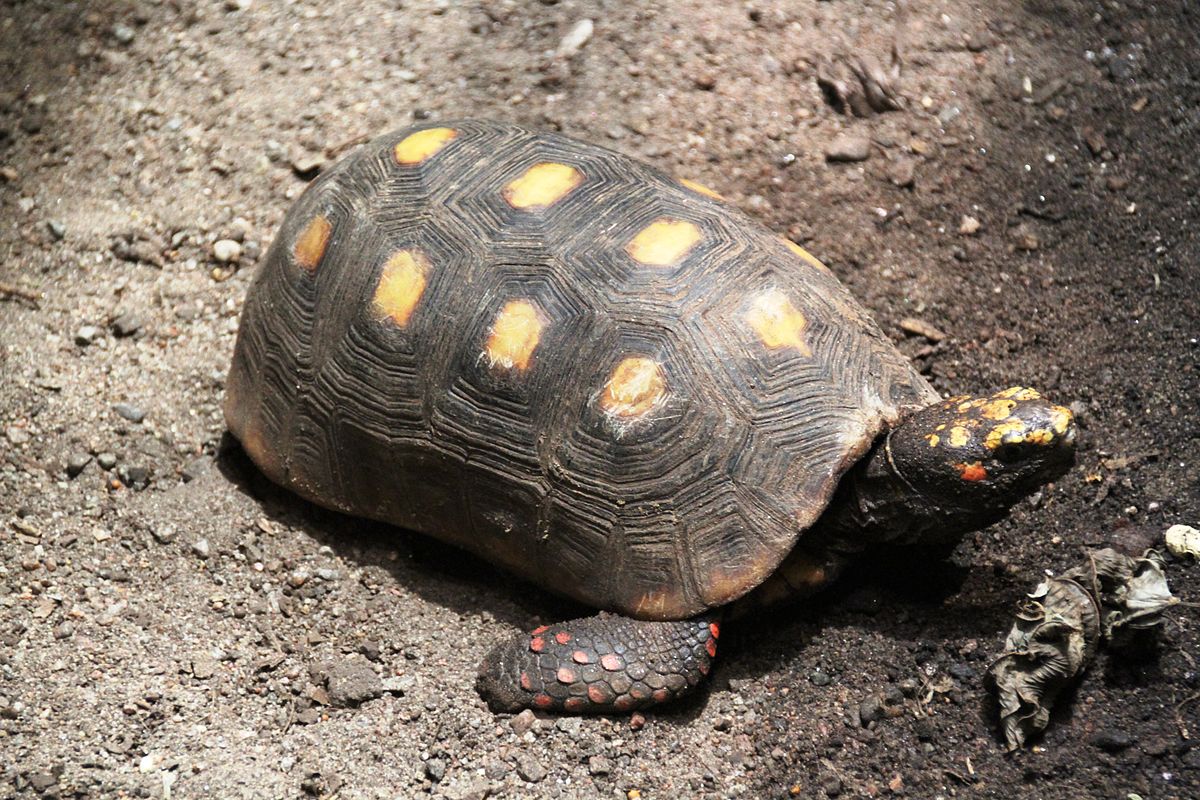
The Red Footed Tortoise can be found in the rainforests of South America. It’s an adorable reptile that sports bright red and orange markings on its legs and head, making it quite the eye-catcher. Known for their friendly and curious nature, these tortoises thrive in humid environments and feast on a varied diet of fruits, vegetables, and insects. If you’re interested in seeing unique and colorful creatures, the Red Footed Tortoise is the perfect candidate.
Read More About Red-footed Tortoise: 15 Red Footed Tortoise Facts
18
of 25
Fer-de-Lance
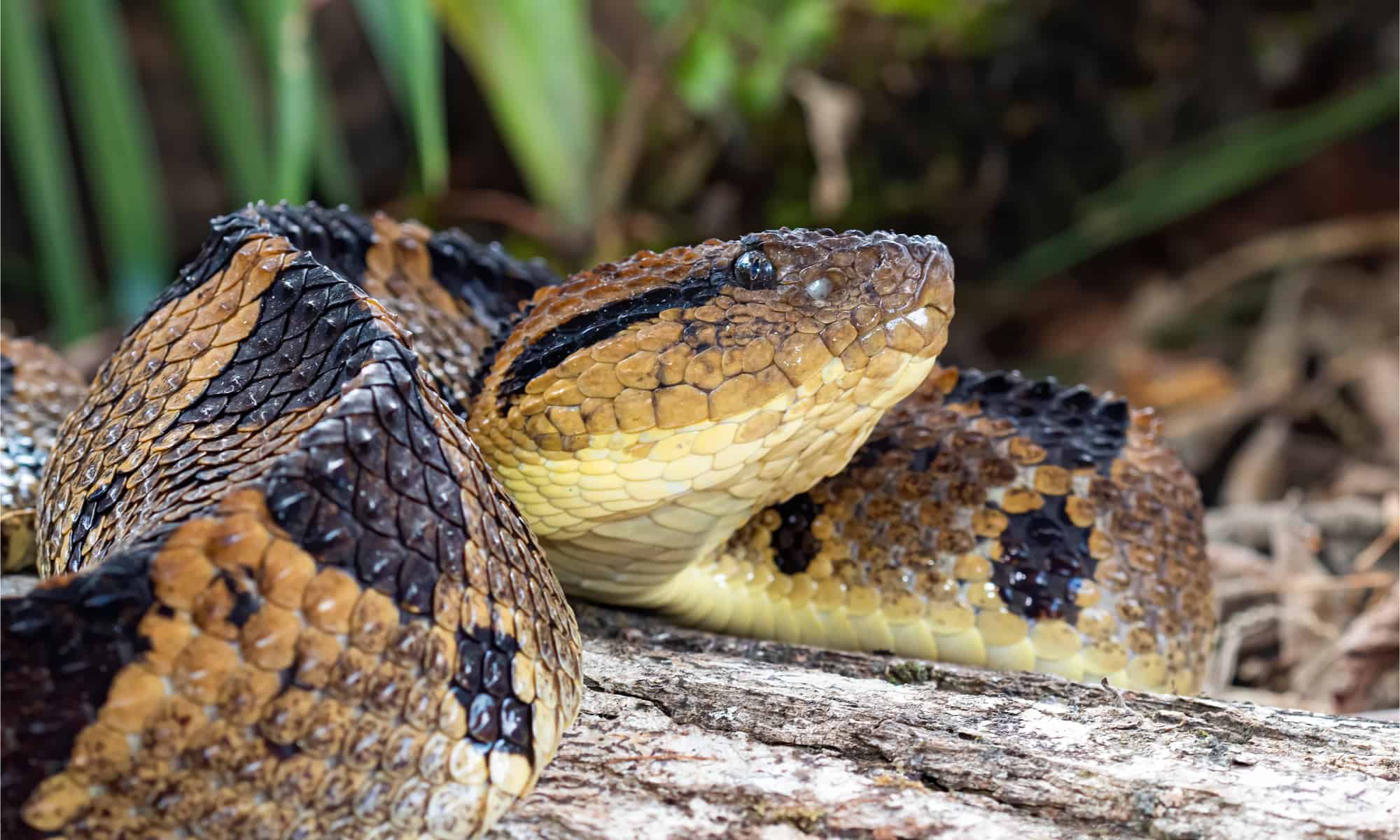
The fer-de-lance is perhaps one of the most mysterious reptiles residing in the rainforest. Known for its potent venom and stealthy movements, this snake slithers through the dense undergrowth, appearing cool but fearsome. From its unique hunting techniques to the myths surrounding it, the fer-de-lance holds an enigmatic aura waiting to be unraveled, making it a true rainforest legend.
Read More About Fer-de-Lance: 18 Enigmatic Facts About Fer-de-lance
19
of 25
Bushmaster
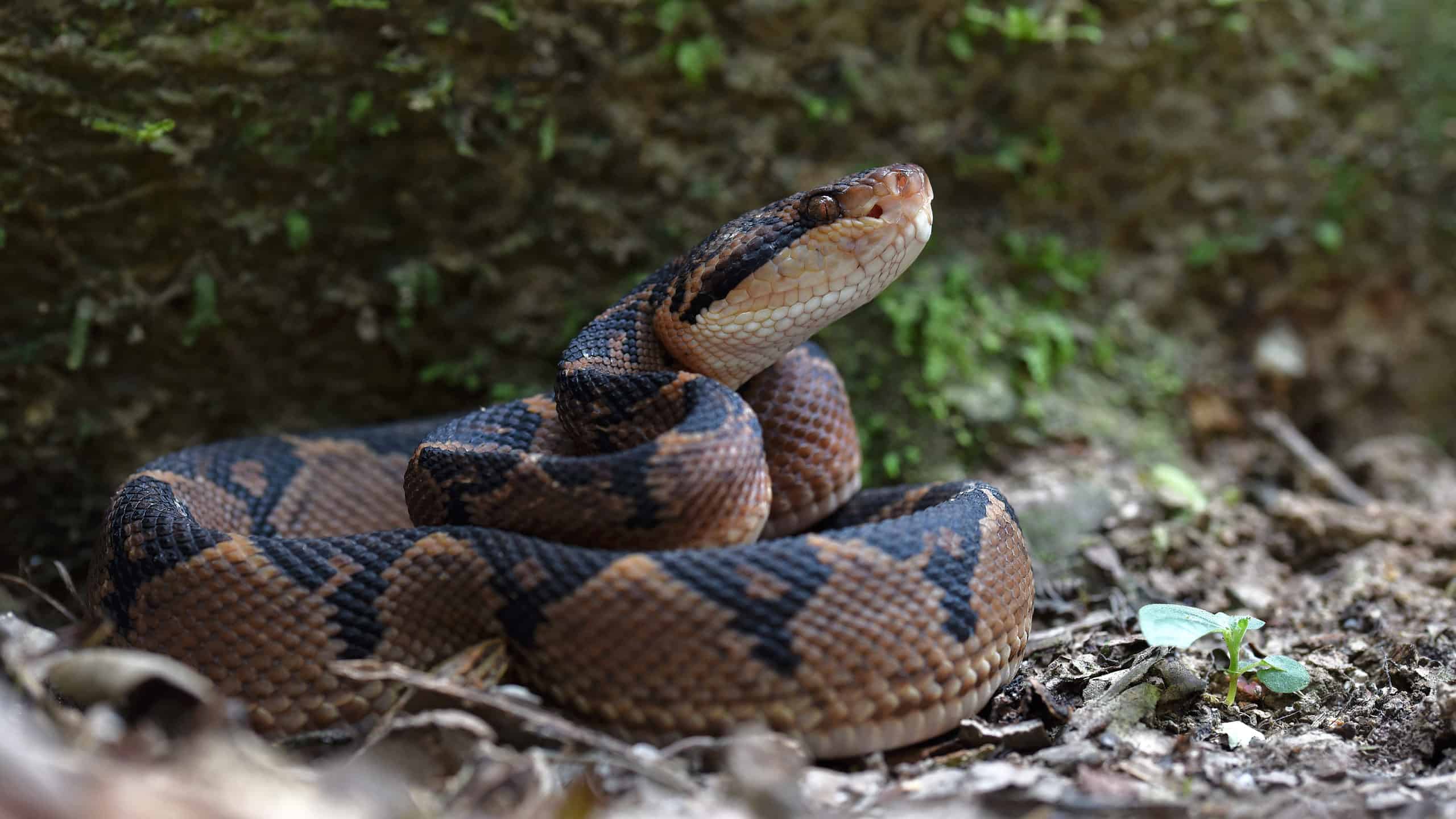
The Bushmaster is a venomous pit viper, known for its striking size and potent bite. Lurking in the shadows of the Central and South American rainforests., it has heat-sensing pits that it uses to detect warm-blooded prey even in complete darkness. Other than being a menacing creature, the Bushmaster boasts of unique survival tactics and an enigmatic allure that allows them to reign supreme among rainforest reptiles.
Read More About Bushmaster: 12 Intriguing Facts About Bushmaster
20
of 25
Coral Snake
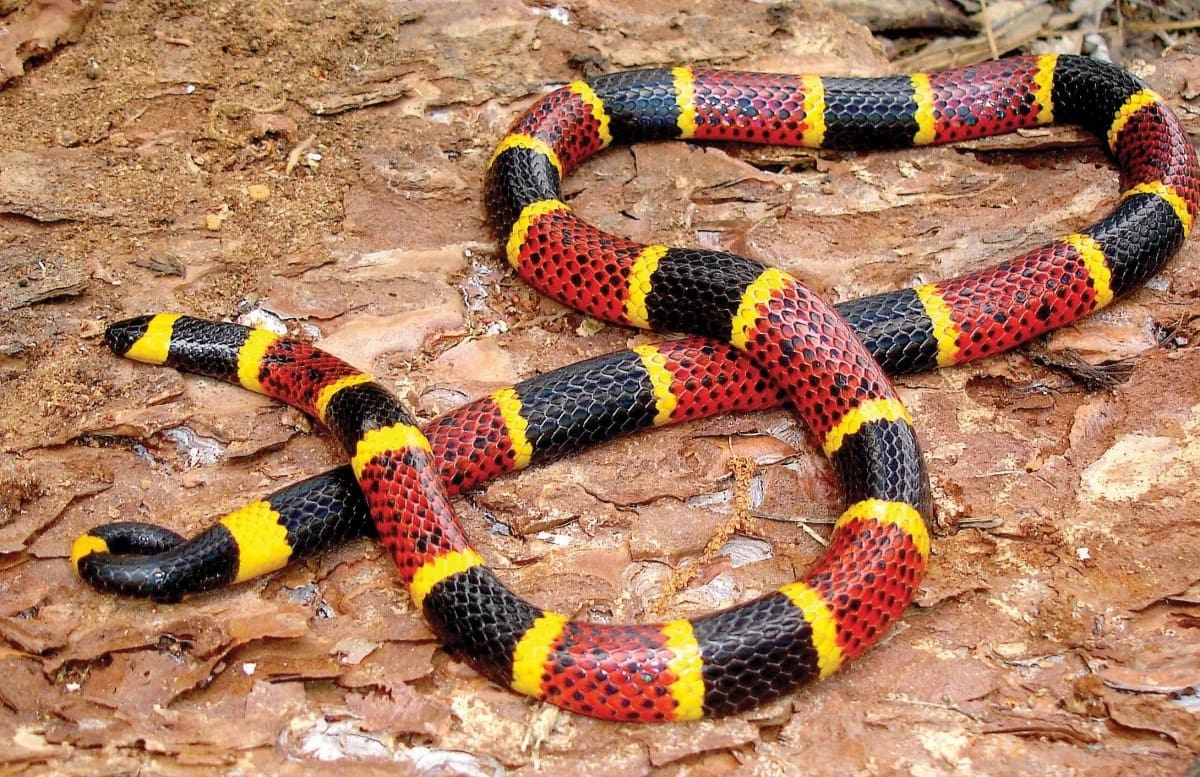
Tucked away in the lushness of the rainforest, coral snakes are a sight to behold. With vibrant red, yellow, and black bands, they aren’t just eye-catching though—they also happen to be highly venomous. They are likewise secretive by nature, so it’s unsurprising that they lead a solitary life, often hiding under leaves or burrowing in the ground. Unlike most of their kind, the coral snake delivers venom through a chewing motion, making them unique predators. Thus, it’s best to keep your distance as their neurotoxic venom can be deadly. This makes coral snakes one of the most dangerous reptiles in the rainforest.
Read More About Coral Snake: 19 Astonishing Facts About Coral Snake
21
of 25
Boa Constrictor
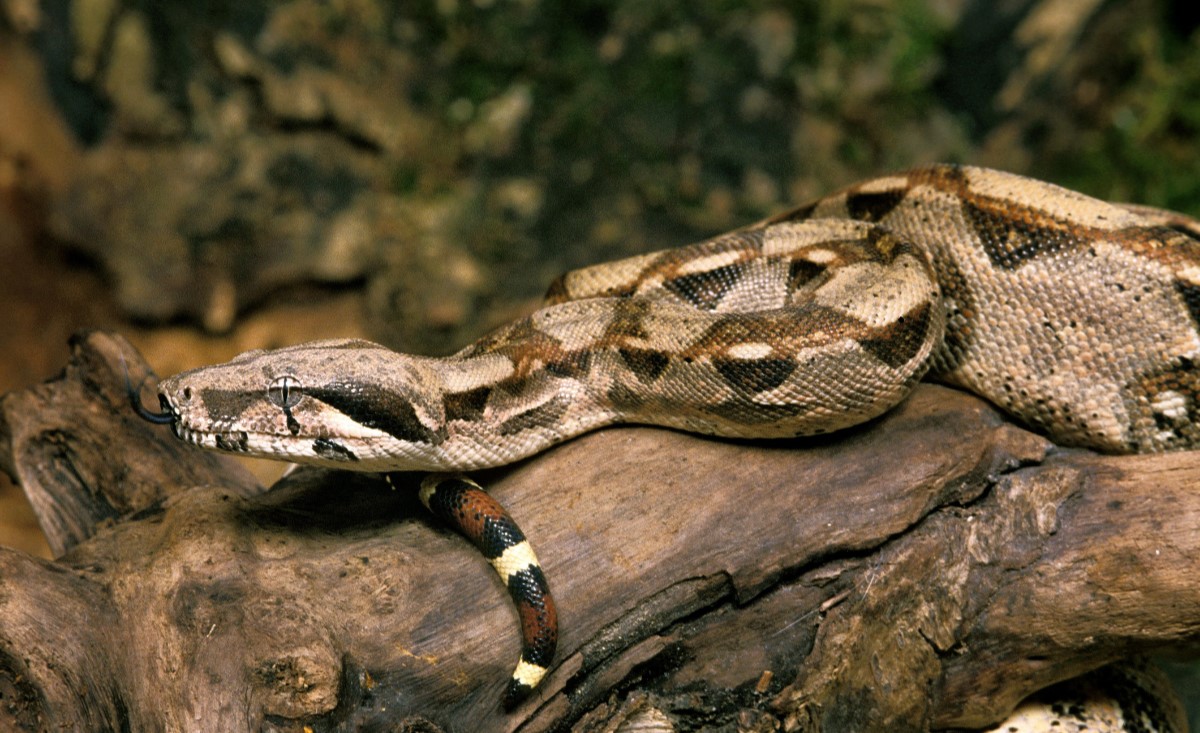
Boa constrictors, with their mesmerizing patterns and formidable size, are one of the rainforest’s most intriguing inhabitants. They can grow up to 13 feet long and suffocate their prey with powerful coil squeezes. These giants often hang out in trees, but can sometimes be seen on the ground, blending seamlessly with their surroundings. The boa constrictor is not just a night predator, it can also hunt during the day. They also give birth to live young instead of laying eggs, ensuring their offspring a better chance of survival.
Read More About Boa Constrictor: 14 Enigmatic Facts About Boa Constrictor
22
of 25
Rainbow Boa
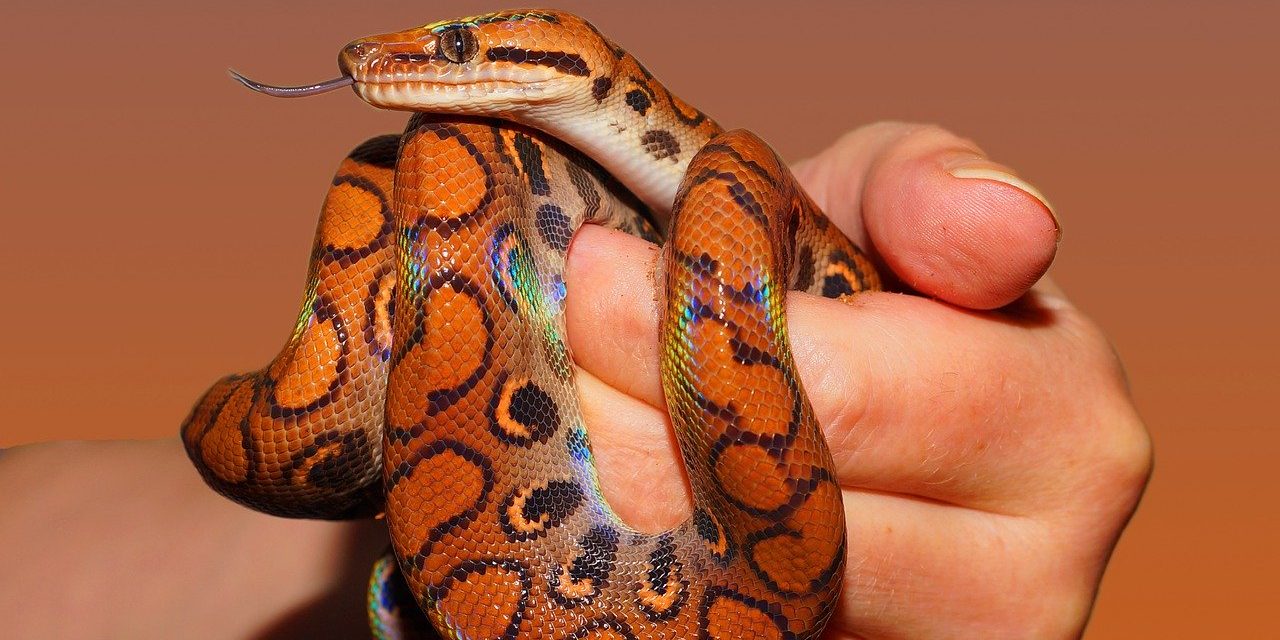
Native to Central and South America, Rainbow Boas thrive in humid environments, often near water sources. They are absolute showstoppers in the rainforest, boasting of iridescent scales that shimmer like a living rainbow. These beauties are non-venomous constrictors, but they hunt primarily for small mammals, birds, and amphibians. A fascinating thing about Rainbow Boas is that they can see infrared light, making them exceptional hunters even in complete darkness. Their unique appearance and intriguing behaviors make them one of the most extraordinary rainforest reptiles.
Read More About Rainbow Boa: 19 Extraordinary Facts About Rainbow Boa
23
of 25
Eyelash Viper
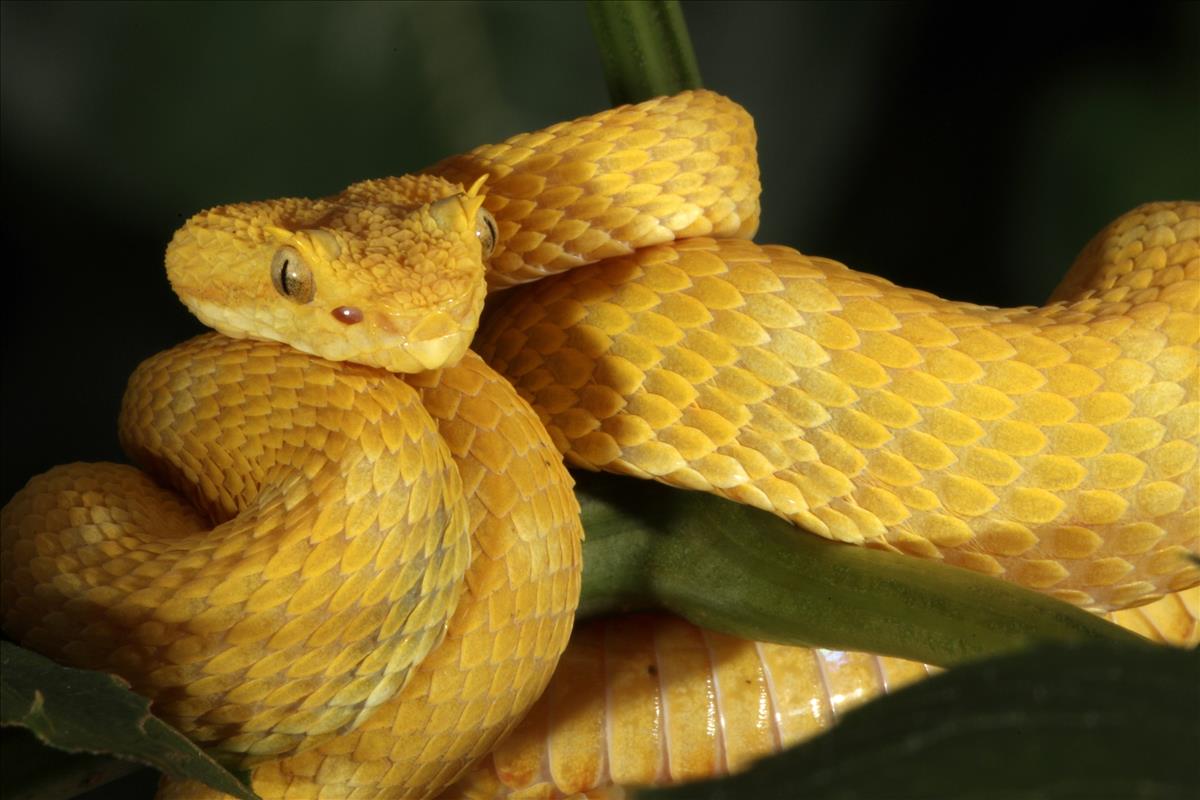
Nestled in the vibrant rainforests, the Eyelash Viper is a tiny but mesmerizing serpent. Known for its striking colors and distinctive “eyelash” scales set above the eyes, this snake is a master of disguise. From bright yellows to vivid greens, its appearance can be breathtaking. With an affinity for hanging out in trees and low bushes, the Eyelash Viper considers small birds, frogs, and rodents as its food. Despite its small size, this reptile packs a potent venom punch, making it a formidable forest dweller.
Read More About Eyelash Viper: 20 Captivating Facts About Eyelash Viper
24
of 25
Gaboon Viper

The Gaboon viper, one of the rainforest’s most extraordinary inhabitants, boasts of eight fascinating traits that set it apart from the others. Known for having great camouflage properties, this snake can blend seamlessly with the forest floor. Sporting the longest snake fangs, the Gaboon Viper is obviously one venomous snake. Despite this however, its remains largely docile, rarely striking unless provoked. Its unique hunting strategy involves tons of patience, especially in waiting for unsuspecting prey. Given the Gaboon viper’s vibrant patterns and hefty build, it’s practically a standout reptile in the rainforest.
Read More About Gaboon Viper: 8 Extraordinary Facts About Gaboon Viper
25
of 25
Green Sea Turtle
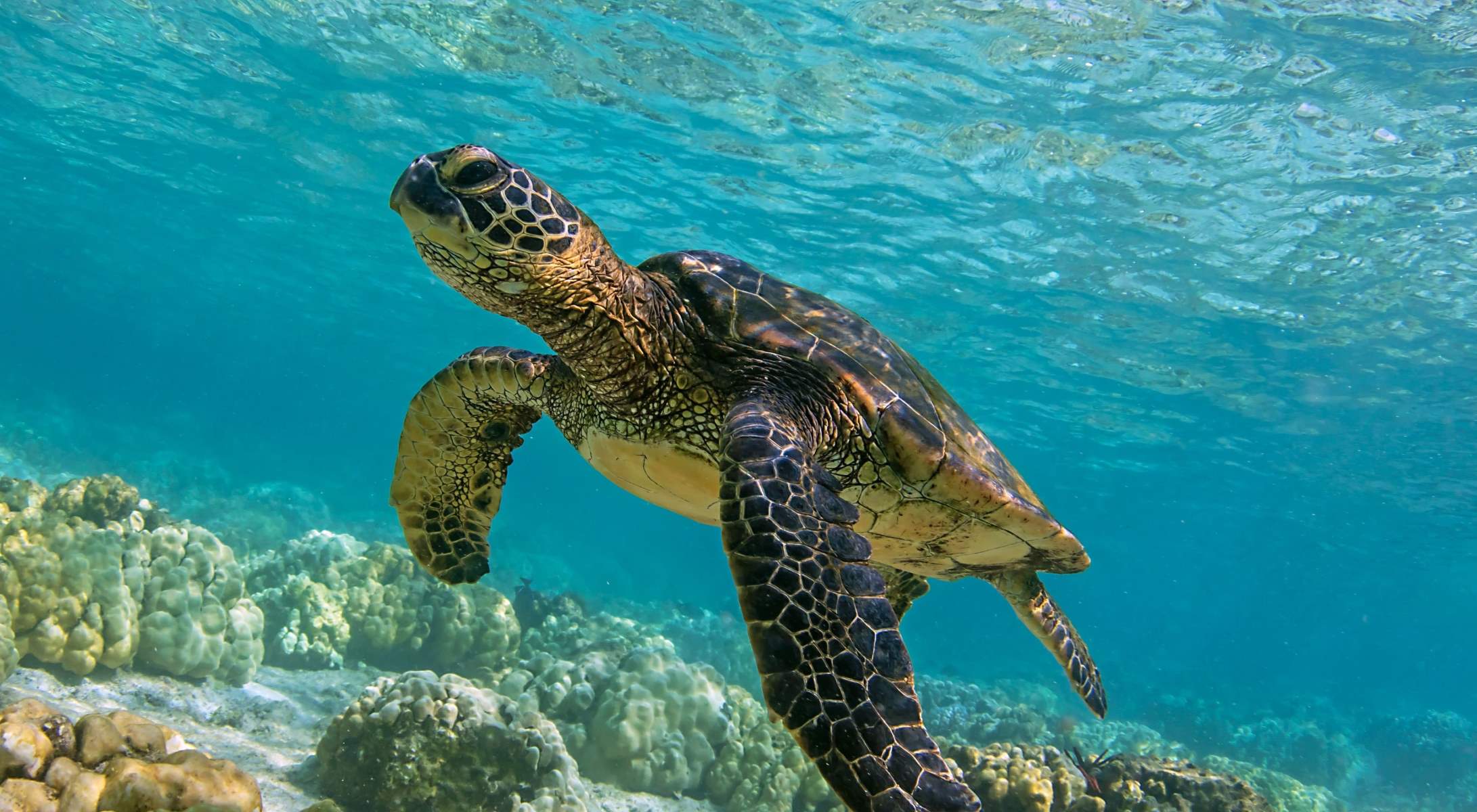
Green sea turtles are fascinating creatures found, not only in coastal areas but also in rainforests. With their colorful shells and gentle nature, these reptiles can easily captivate hearts. They’re not just pretty faces, either—green sea turtles play a crucial role in marine ecosystems by maintaining seagrass beds and coral reefs. These amazing reptiles can live up to 80 years and travel thousands of miles during their lifetime. From their unique nesting habits to their impressive navigation skills, green sea turtles offer a treasure chest of fun facts that make learning about them a delight.
Read More About Green Sea Turtle: 28 Best Fun Facts About The Green Sea Turtle
Was this page helpful?
Our commitment to delivering trustworthy and engaging content is at the heart of what we do. Each fact on our site is contributed by real users like you, bringing a wealth of diverse insights and information. To ensure the highest standards of accuracy and reliability, our dedicated editors meticulously review each submission. This process guarantees that the facts we share are not only fascinating but also credible. Trust in our commitment to quality and authenticity as you explore and learn with us.
